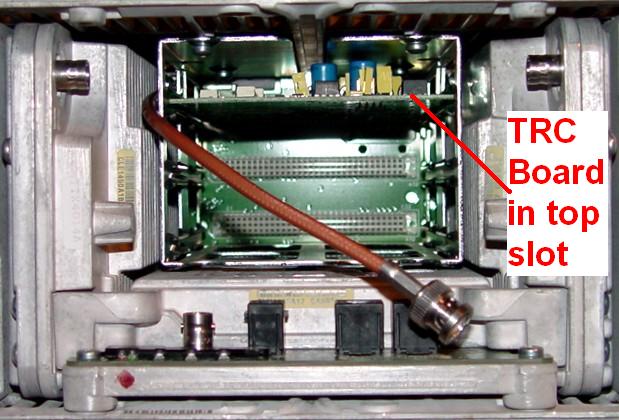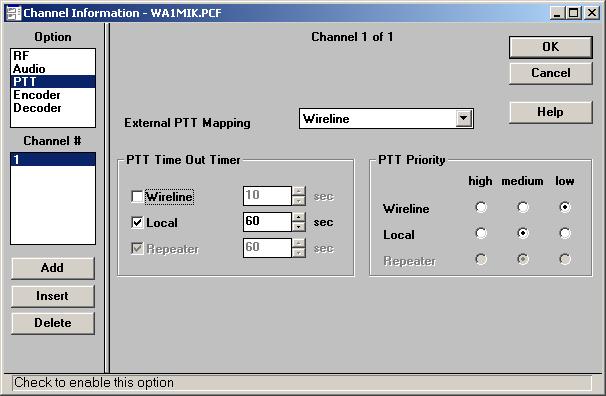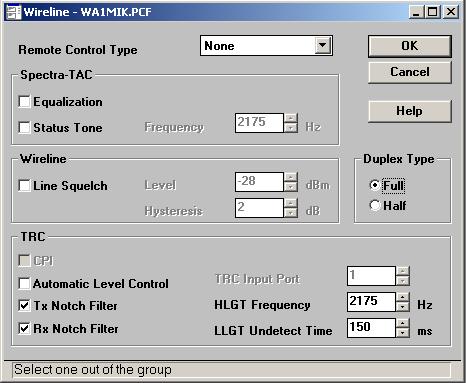Up two levels (Main Moto Index)
Back to Home
Interfacing Information
Submitted by Matthew Littleton KN4SWB
Additional input from Robert Meister WA1MIK
Currently Maintained by Mike Morris WA6ILQ

|
Up one level (MTR2000 Index) Up two levels (Main Moto Index) Back to Home |
Additional Motorola MTR2000 Interfacing Information Submitted by Matthew Littleton KN4SWB Additional input from Robert Meister WA1MIK Currently Maintained by Mike Morris WA6ILQ |

|
This is an update to the "Interfacing the MTR2000 to an External Controller (Arcom RC210)" article. I have found a way to get the MTR2000 to pass audio with the internal PL/DPL tone intact, without an external tone generator.
Background:
The guys at the Reno Ham Radio Club provided an excellent article on interfacing an MTR2000 to the RC210. I was SO disappointed to learn the MTR would not pass the controller audio with the internally generated PL or DPL encoder. This bothered me as we have numerous MTR2000s in service in the Public Safety sector where the Dispatch Center connects directly to the MTR2000 and is able to pass both audio and PL/DPL. So I dug up the service manual, put my glasses on, and began to read. Here is what I learned!
First, both authors are correct with respect to passing audio through the "Auxiliary Transmit Audio Input" in that the MTR2000 drops the PL/DPL encoder leaving you with only two options: use an external PL/DPL tone generator or don't use coded squelch decode on the user radios; neither choice is really desirable in today's crowded repeater bands.
Requirements:
You need a station that has the "TRC" or "Tone Remote Control" board installed in the top slot of the card cage. This was a stock option on all MTR2000 stations. See the photo below for its location in the front of the station; the coax cables have been disconnected for clarity.

There will be a black four-pin jack located on the rear of the station labeled "WIRELINE" and marked "1- 1+ 2- 2+". See the photo below. If your station does not have the wireline connector and the TRC board, you can't use this scheme.
This interconnection method can be used on many other base/repeater stations that have wireline control capability and the installed hardware, such as the MSF5000.
Station Configuration:
With the TRC board installed, you will need to configure the station with the programming software as follows:
Look at the Station Configuration Report screen and note the exact model number of the "Wireline Board Type" that is in your station.
On the "Station Configuration Page", configure the MTR2000 for "Base Station Operation." Resist the urge to configure it for "Repeater Operation" as the external repeater controller will take care of this. Make sure the "Wireline Board Type" is configured for the correct board model number and in "4 wire" mode, not "2 wire". See the screen shot below.

According to the "Installation and Operation manual", System Connector pin C10 (External Tx. keying signal) states:
"Grounding Ext. PTT pin causes Tx to key. 5.0Vdc on pin when Tx is not keyed. Note: To transmit signaling code (PL / DPL) by external PTT, it should be mapped (via RSS) to Wireline, and external modulation input should be routed to wireline."
They should have made the language a bit stronger, as this information MUST be followed exactly in order for this to work.
On the "Personality", "Channel Information", "PTT" page, set the "External PTT mapping" to "Wireline". IT WILL NOT WORK IF YOU DO NOT MAP THE AUDIO!! This is the only option that will pass external audio and internal PL/DPL. Make sure you UNCHECK the box next to "Wireline" in the "PTT Timeout Timer" area so the station doesn't time out when the external repeater controller keys it. See the screen shot below.

On the "Personality", Wireline" page, set "Duplex Type" to "Full" as you will be using two separate audio paths (transmit and receive). You should also set the "Remote Control Type" field to "None" because you don't want the wireline card to respond to anything or try to control the station; you just want it to pass voice audio to and from the external repeater controller. See the screen shot below.

Wiring the Station to the Controller:
Route the TX audio and RX audio and other connections to the appropriate pins of the Wireline and System Connectors, as detailed in the table below. Note that just about every repeater controller out there can be interfaced with this connection scheme.
| MTR2000 Station | Arcom RC210 Controller | ||||
|---|---|---|---|---|---|
| Signal Name | Conn | Pin | Pin | Signal Name | Notes |
| Audio Input | Wireline | 1+ | 4 | TX Audio Output | |
| Audio Input | Wireline | 1- | 6 | Ground | |
| Audio Output | Wireline | 2+ | 5 | RX Audio Input | |
| Audio Output | Wireline | 2- | 8 | Ground | |
| PTT Input | System | C10 | 3 | TX PTT Output | Active LOW |
| Rcvr. Unsq. | System | C2 | 7 | RX COS Input | Active HIGH |
| Ground | System | C19 | 9 | Ground | |
Remember to configure your controller's PTT and COS active levels as noted above. Also, the RC210 must have the RX Audio setting jumper removed (for flat audio) on the port attached to the MTR2000, since the audio coming out of the wireline connector is de-emphasized and you don't want the controller de-emphasizing it as well.
Before you adjust the external controller's audio levels, it is a good idea to check or go through the MTR2000's TX and RX Level adjustments, accessible through the Station Alignment procedures in the programming software.
That's it!! There's no magic here and there's no super secret process. All of this can be found in the MTR2000 "Installation and Operation Manual". As always, make sure you exercise good RF and electrical practices when making connections. Check and double-check your wiring prior to connecting equipment and applying power. Our repeater is working perfectly using this wiring scheme and the audio is amazing using the MTR station. Good luck!
The author can be contacted at: muttlittlejohn [ at ] gmail [ dot ] com.
Bob can be contacted at: his-callsign [ at ] comcast [ dot ] net.
Back to the top of the page
Up one level (MTR2000 Index)
Up two levels (Main Moto Index)
Back to Home
This page originally posted on 11-May-2012.
Article text © Copyright 2012 by Matthew Littleton KN4SWB.
Photos and hand-coded HTML © Copyright 2012 by Robert W. Meister WA1MIK.
This web page, this web site, the information presented in and on its pages and in these modifications and conversions is © Copyrighted 1995 and (date of last update) by Kevin Custer W3KKC and multiple originating authors. All Rights Reserved, including that of paper and web publication elsewhere.